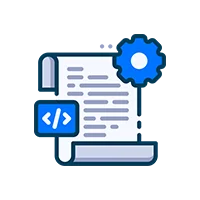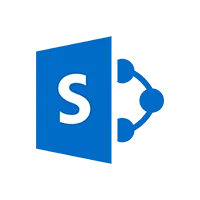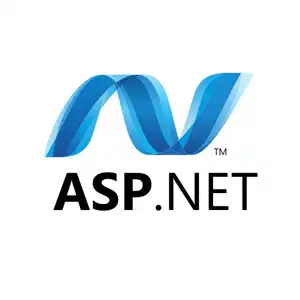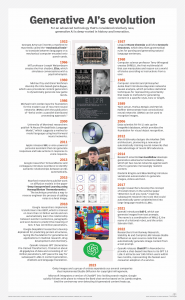.NET development refers to the process of creating applications, websites, and services using the .NET framework, a software development platform developed by Microsoft. The .NET framework provides a vast set of tools, libraries, and runtime components that enable developers to build a wide range of applications, from simple desktop applications to complex enterprise-level web applications.
In this article, we have mentioned basic information about .NET development and how it helps companies grow in the market.
Key components of .NET development include:
- Common Language Runtime (CLR): The CLR is the core runtime engine of the .NET framework. It provides various services such as memory management, security, and exception handling. It also allows different programming languages to interoperate seamlessly, as long as they target the .NET framework.
- Base Class Library (BCL): The BCL is a collection of reusable classes, interfaces, and value types that are available to developers across different .NET programming languages. It provides a rich set of functionality for common tasks like file I/O, networking, data manipulation, and more.
- Languages: .NET supports multiple programming languages, including C#, Visual Basic.NET (VB.NET), F#, and others. C# is the most commonly used language for .NET development, and it’s designed to be easy to learn and use while offering strong typing, object-oriented capabilities, and robust features.
- Integrated Development Environments (IDEs): Microsoft offers Visual Studio, a powerful IDE for .NET development. Visual Studio provides a range of tools for designing, coding, testing, and debugging .NET applications.
- ASP.NET: The ASP.NET is a web development company that works on the framework within .NET, used for building web applications and services. It allows ASP.NET developers to create dynamic web pages, handle HTTP requests, and interact with databases and other web services.
- Entity Framework (EF): EF is an Object-Relational Mapping (ORM) framework that simplifies database interactions by allowing developers to work with databases using object-oriented code.
.NET development is widely used in enterprise environments, web development, game development, cloud-based applications, and more, thanks to its flexibility, performance, and the extensive tools and libraries it offers. It continues to be an essential technology for developers building applications in the Microsoft ecosystem.
Advantages of Using this .NET Development
Using .NET development offers several advantages for developers and businesses:
- Versatility: .NET supports various programming languages, such as C#, VB.NET, and F#, allowing developers to choose the language they are most comfortable with while still benefiting from the .NET ecosystem.
- Cross-platform Development: With the introduction of .NET Core (now .NET 5+), .NET development has become cross-platform, enabling developers to build applications that run on Windows, macOS, and Linux.
- Rich Framework and Libraries: The .NET framework provides a vast collection of libraries and APIs (such as the Base Class Library) that simplify and accelerate development. This allows .NET developers to focus on application logic rather than low-level tasks.
- Consistency: The .NET framework offers a unified de velopment model, which means developers can use the same codebase to build applications for various platforms (e.g., desktop, web, mobile) without having to rewrite the entire application.
- Security: .NET is designed with security in mind, providing built-in security features like code access security, role-based security, and data encryption. Additionally, regular security updates are released by Microsoft to address potential vulnerabilities.
Our Primary Services for .Net Services
These companies can build a wide range of software solutions, including:
- Web Applications: Developing robust and scalable web applications using ASP.NET, ASP.NET Core, and other web-related technologies.
- Desktop Applications: Building Windows desktop applications using Windows Forms or Windows Presentation Foundation (WPF).
- Mobile Applications: Developing cross-platform or native mobile applications using Xamarin, a framework that integrates with .NET.
- Cloud Solutions: Creating cloud-native applications leveraging Microsoft Azure and other cloud services.
- Enterprise Solutions: Offering custom software development for businesses, including enterprise resource planning (ERP), customer relationship management (CRM), and other specialized systems.
- E-commerce Platforms: Building online shopping platforms and integrating with payment gateways and inventory management systems.
Our approach towards high-quality services
The approach of Adequate Infosoft providing .NET development services should be structured, collaborative, and customer-centric. Here are the key steps and elements that such a .NET software development company should incorporate into its approach:
- Requirement Gathering: Understand the client’s needs and objectives. Collaborate closely with the client to gather detailed requirements, specifications, and expectations for the project.
- Project Planning: Create a comprehensive project plan that outlines the scope, milestones, timeline, and resource allocation. Define the technologies and frameworks to be used, and discuss the development methodology with the client.
- Design and Architecture: Develop a robust software architecture that aligns with the client’s requirements and ensures scalability, maintainability, and performance. Create wireframes and prototypes to visualize the user interface and gather feedback.
- Development: Implement the software solution using .NET technologies and best coding practices. Break down the development process into manageable sprints (if following an agile methodology) and maintain continuous communication with the client.
- Quality Assurance: Conduct rigorous testing at various stages of development to identify and rectify bugs, errors, and performance issues. Implement automated testing where possible to ensure consistent quality.
- Deployment and Integration: Deploy the application on the client’s infrastructure or cloud environment, ensuring proper integration with other systems and databases if required.
The post Best .NET (Dot NET) Development Company | Hire .NET (Dot NET) Developers appeared first on .
Tags:
- .NET Development
- Software Development Company
- .NET development
- .net Software Development Company
- .NETdevelopment framework

 .NET MAUI Development
.NET MAUI Development
 Xamarin Application Development
Xamarin Application Development
 React Native App Development
React Native App Development
 iOS Application Development
iOS Application Development
 Android Application Development
Android Application Development
 Android Wear App Development
Android Wear App Development
 Ionic Development
Ionic Development
 iBeacon Application Development
iBeacon Application Development
 Universal Windows Platform (UWP)
Universal Windows Platform (UWP)
 Kotlin Application Development
Kotlin Application Development
 Swift Application Development
Swift Application Development
 Flutter Application Development
Flutter Application Development
 PWA Application Development
PWA Application Development
 .NET Application Development
.NET Application Development
 .NET Nuke Development
.NET Nuke Development
 Microsoft Dynamics CRM
Microsoft Dynamics CRM
 Microsoft Small Business Solution
Microsoft Small Business Solution
 VB .NET Development
VB .NET Development
 C# Development
C# Development
 Sharepoint Migration
Sharepoint Migration
 Sharepoint Development
Sharepoint Development
 ASP.NET Core Development
ASP.NET Core Development
 ASP.NET Development
ASP.NET Development
 ASP.NET MVC Development
ASP.NET MVC Development
 Kentico CMS
Kentico CMS
 Umbraco CMS
Umbraco CMS
 AJAX Development
AJAX Development
 Agile Development
Agile Development
 Microsoft Bot
Microsoft Bot
 Microsoft Blazor
Microsoft Blazor
 Microsoft Azure Cognitive
Microsoft Azure Cognitive

 Mean Stack Development
Mean Stack Development
 Vue JS Development
Vue JS Development
 Javascript Development
Javascript Development
 Angular JS Development
Angular JS Development
 Next JS development
Next JS development
 Java Development
Java Development
 Python Development
Python Development
 Django Development
Django Development
 Cherrypy Development
Cherrypy Development
 NodeJS Development
NodeJS Development
 Laravel Development
Laravel Development
 CodeIgniter Development
CodeIgniter Development
 Zend Development
Zend Development
 Ruby on Rails Development
Ruby on Rails Development
 CakePHP Development
CakePHP Development
 PHP Website Development
PHP Website Development
 Symfony Development
Symfony Development
 Drupal Development
Drupal Development
 Joomla Development
Joomla Development
 Wordpress Development
Wordpress Development
 Offshore Software Development
Offshore Software Development
 Custom Application Development
Custom Application Development
 Full Stack Development
Full Stack Development
 AI & Machine Learning
AI & Machine Learning
 Custom CRM Solutions
Custom CRM Solutions
 Flask Software Development
Flask Software Development
 Electron JS Development
Electron JS Development
 ChatGPT Development
ChatGPT Development
 Magento Development
Magento Development
 Magento 2.0 Development
Magento 2.0 Development
 Magento Enterprise
Magento Enterprise
 Shopping Cart Development
Shopping Cart Development
 Prestashop Development
Prestashop Development
 Shopify Development
Shopify Development
 Open Cart Development
Open Cart Development
 WooCommerce Development
WooCommerce Development
 BigCommerce Development
BigCommerce Development
 NopCommerce Development
NopCommerce Development
 Virto Commerce Development
Virto Commerce Development
 AspDotNetStorefront Development
AspDotNetStorefront Development
 RaspBerry Pi
RaspBerry Pi
 Firmware Software Development
Firmware Software Development
 ESP 32 Software Development
ESP 32 Software Development
 Embedded Development
Embedded Development
 Internet of Things
Internet of Things
 Nordic Development
Nordic Development
 HTML 5
HTML 5
 UI/UX Design
UI/UX Design
 Graphic Design
Graphic Design
 Adobe Photoshop
Adobe Photoshop
 XML Application Development
XML Application Development
 Cloud Computing Solutions
Cloud Computing Solutions
 Azure Cloud App Development
Azure Cloud App Development
 AWS Development
AWS Development
 Google Cloud Development
Google Cloud Development
 SQL Programming Development
SQL Programming Development
 MySQL Development
MySQL Development
 MongoDB Development
MongoDB Development
 Big Data
Big Data
 Robotic Process Automation
Robotic Process Automation
 Social Media Marketing
Social Media Marketing
 Search Engine Optimization
Search Engine Optimization
 QA Testing
QA Testing
 Software Testing
Software Testing
 Software Security
Software Security
 Maintenance And Support
Maintenance And Support
 I.T. Consulting Services
I.T. Consulting Services
 Business Intelligence
Business Intelligence
 YII Development
YII Development
 Data Analysis
Data Analysis
 Alexa Skills Development
Alexa Skills Development
 On Demand App for Mobile repairing services
On Demand App for Mobile repairing services
 On Demand App for Car Service Booking
On Demand App for Car Service Booking
 On Demand App for Cleaning Services
On Demand App for Cleaning Services
 On Demand App for Pharmacy
On Demand App for Pharmacy
 On Demand Dedicated Developers
On Demand Dedicated Developers






Leave a Reply